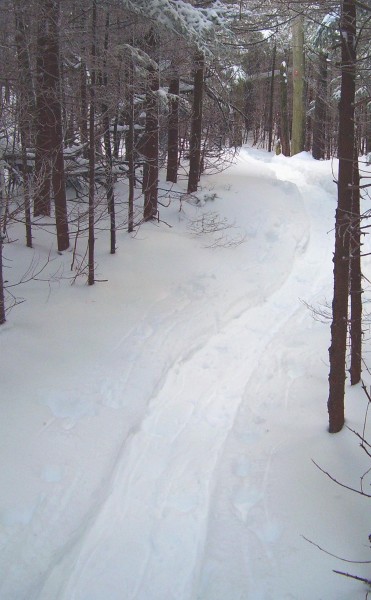
A freshly-packed trail perfect for snowshoeing.
ActionHub has given advice on how runners can make adjustments in preparation for the winter season. We’ve also provided guidance on how to learn the basics of snowshoeing, as well as how to pick the right pair. But why not combine the two and get the ultimate exercise this winter by trying out snowshoe running?
The first step is to purchase snowshoes that are made specifically for running, which tend to be smaller than “traditional” snowshoes. If you’ve snowshoed before but are taking your first dive into snowshoe running, we recommend renting a pair before shelling out the cash to buy them.
Ensuring you have a decent set of poles will also assist in your overall performance. Poles that easily bend won’t provide enough stability, as you’ll occasionally be relying on them with a good amount of weight, especially when dodging a fall. As with regular snowshoeing, you can leave the poles behind once you’re comfortable enough with the motions. Where poles are really important is in backwoods environments where the powder can be quite deep.
As for the new motions your body will have to adapt to, it’s simply incorporating a slightly wider stance and learning to lift your knees a tad higher. Although running snowshoes were made to adapt well to terrain, there will be more resistance than conventional running, so plan to cover a shorter distance. But don’t worry about the amount of exercise you’ll be getting—according to Snowsports Industries America, just snowshoeing burns at least 600 calories per hour, so running in snowshoes is quite a workout. An article in Impact Magazine detailed data that snowshoe running burns between 800 and 1,000 calories an hour at the very least, depending on gender and weight.
Although the temperatures you’ll encounter are bound to be low, take into account the additional heat your body will be producing by running rather than just walking. Wear fewer layers, but make sure to pack extras in a small backpack in case it’s cold enough to need more coverage.
While snowshoeing is permitted on most trails, there are plenty of online sources to assist in choosing a trail. Start on a packed trail and save exploring backcountry powder for when you’re really comfortable. If you’re accustomed to running with a partner or in a group, do the same for your first time snowshoe running.
To search for a snowshoe trail near you, check out Snowshoes.com. For runners who often race in warmer months, snowshoe races are something else than can be worked toward.
Check out the video below that details REI’s snowshoe running advice.
Image from Daniel Case on the Wikimedia Commons
 Your Privacy Choices
Your Privacy Choices
 The
The